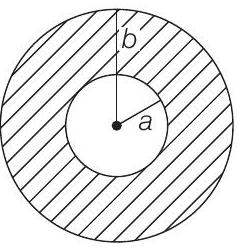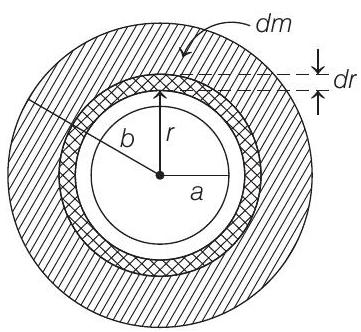Rotation 1 Question 1
1. A circular disc of radius
 disc about its axis passing through the centre is (2019 Main, 12 April I)
disc about its axis passing through the centre is (2019 Main, 12 April I)
(a)
(b)
(c)
(d)
Show Answer
Answer:
Correct Answer: 1. (c)
Solution:
- Key Idea Radius of gyration
To find
Given, variation in mass per unit area (surface mass density),
Calculation of Mass of Disc

Let us divide whole disc in small area elements, one of them shown at
Mass of this element is
Mass of the disc can be calculated by integrating it over the given limits of
Calculation of Moment of Inertia
Now, radius of gyration,
As we know,






